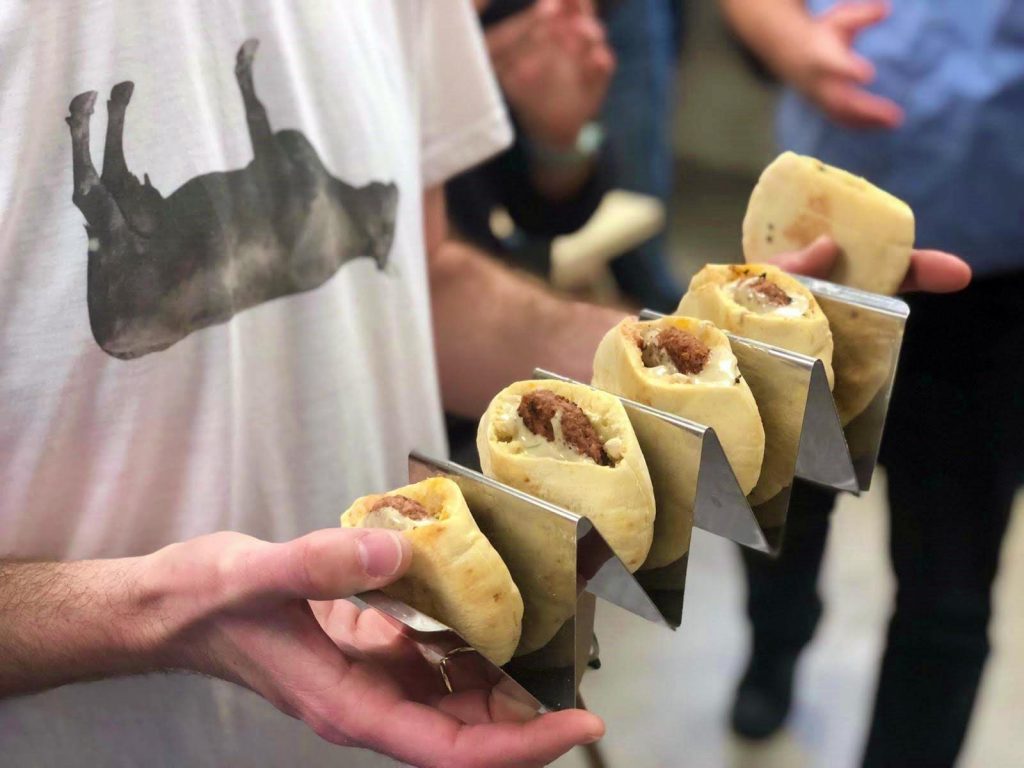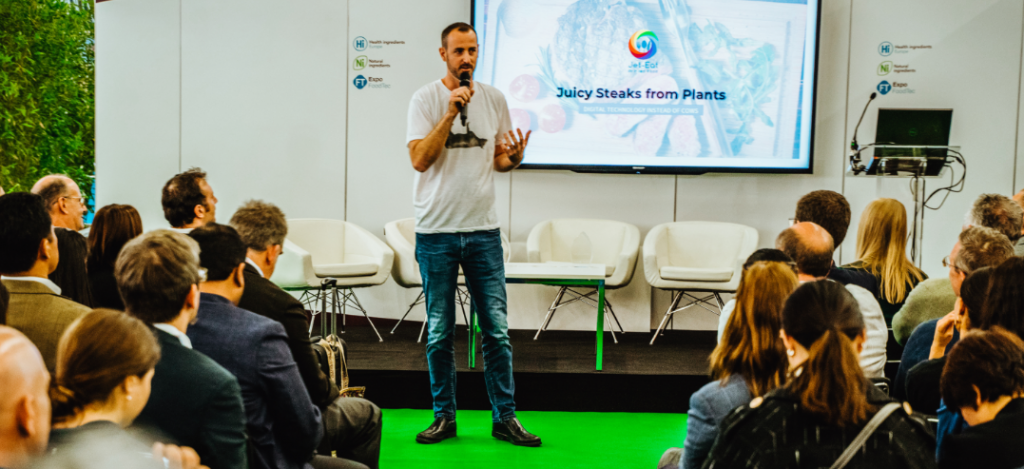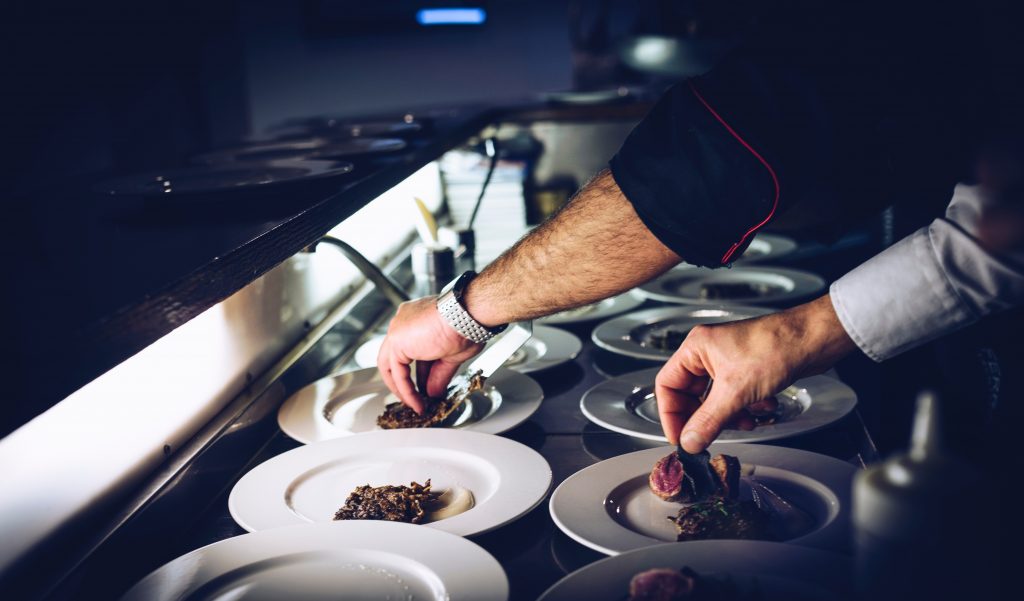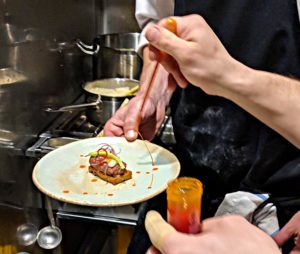We’ve seen meat being 3D printed using plant-based food that matches the real flavor and texture of meat before, and that is the case of Jet-Eat, an Israel company founded in 2015. Jet-Eat’s founder, Eschchar Ben Shitrit, once said: “Israel is the birthplace of innovation in 3D printing and digital printing,” regarding how in Israel they address the problems of conventional markets through printing technologies.
Although 3D printed meat alternatives are emerging everywhere in the world, Jet-Eat is now working on “Redefine Meat” to keep on taking their chance to expand in the food industry to, “redefine” meat. Redefine Meat creates steaks that are made from ingredients that are safe, healthy, and sustainable.
Eshchar and his team have been working on their own technology to create a 3D-printed vegan meat, which they believe it can fool anyone into believing it is 100% real. Redefine Meat’s stake match the muscle, fat, connective tissue, and myoglobin of real meat.
 Image via Redefine Meat’s LinkedIn
Image via Redefine Meat’s LinkedIn
“The discussion about 3D printing as a potential technology for creating the next generation of meat has been around for years. We asked ourselves a simple question: What does it take for 3D printing to become an alternative to animals in the production of meat?” Eshchar says.
“Our unique technology combines software that defines in a digital file desired properties of the printed meat, a special printer that creates very complex structures of food based on that file, and plant-based formulations that contains an element from nature that approximates those found in meat,” Eshchar continued.
Redefine Meat’s goal is to create a natural product in a digital machine that in the future could be produced in a large quantity but in reasonable costs. Eshchar hopes to launch their 3D-printed vegan steak in 2020.
“We are currently focused on improving the product from a quality perspective, as costs are already reasonable, once we are ready with a great product, we believe scaling up will be quite fast during 2020. We want to be fast in going to the market so we improve our quality based on actual professionals and consumer feedback. We’re already doing that on a limited scale today with chefs, butchers, vegans and meat eaters,” Eshchar explains.
On April, Redefine Meat served dinner at a fancy restaurant located in Israel. The elegant plates served had kebab, which was garnished with crimson sauce and slices of red onion. What nobody knew is that the kebab wasn’t really meat, it was a plant-based 3D printed kebab, the first time in the world that was served in a restaurant.
“Hijacking” dinner was the ultimate test for Redefine Meat. As Eshchar explains, Redefine Meat doesn’t want to make a better vegan product, but to attract people who are eating meat. Fortunately for them, 85% of the diners who tried the kebab reported the meat being “meat-like”, which is an important number, meaning that 3D printed vegan meat is closer to the real thing than we may have expected.
Redefine Meat’s secret is in the printing method. The company uses 3D printing to give their products a more realistic texture. Eshchar says that they can mimic the fibers of the meat and the way that fat and water is trapped in the meat matrix.
We will hopefully be seeing Redefine Meat’s products soon. Eshchar wants to have their product on menus in Europe by 2020, but the only problem is the price. Redefine Meat expects their product to be sold for around $33 and $39 per kilo, which it’s quite expensive. However, they expect the prices to go down as they get higher volumes.
[Sources: The Spoon, Food Navigator, Bites, Digital Trends]
Subscribe to Our Email Newsletter
Stay up-to-date on all the latest news from the 3D printing industry and receive information and offers from third party vendors.
You May Also Like
Profiling a Construction 3D Printing Pioneer: US Army Corps of Engineers’ Megan Kreiger
The world of construction 3D printing is still so new that the true experts can probably be counted on two hands. Among them is Megan Kreiger, Portfolio Manager of Additive...
US Army Corps of Engineers Taps Lincoln Electric & Eaton for Largest 3D Printed US Civil Works Part
The Soo Locks sit on the US-Canadian border, enabling maritime travel between Lake Superior and Lake Huron, from which ships can reach the rest of the Great Lakes. Crafts carrying...
Construction 3D Printing CEO Reflects on Being Female in Construction
Natalie Wadley, CEO of ChangeMaker3D, could hear the words of her daughter sitting next to her resounding in her head. “Mum, MUM, you’ve won!” Wadley had just won the prestigious...
1Print to Commercialize 3D Printed Coastal Resilience Solutions
1Print, a company that specializes in deploying additive construction (AC) for infrastructure projects, has entered an agreement with the University of Miami (UM) to accelerate commercialization of the SEAHIVE shoreline...



 Image via Bites
Image via Bites Image via The Spoon
Image via The Spoon



























